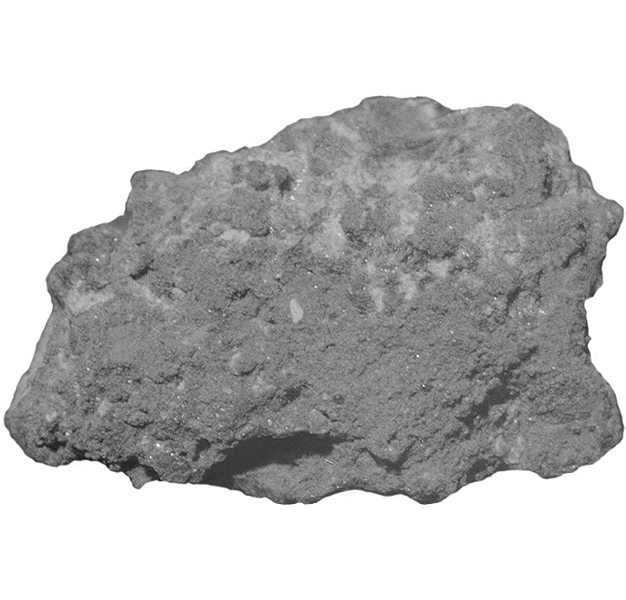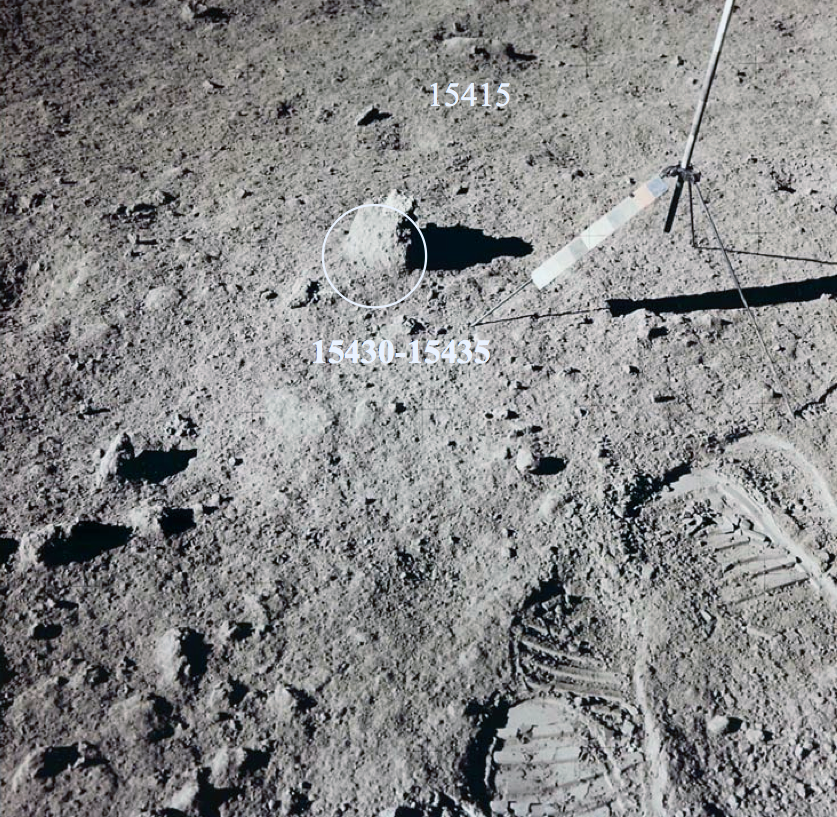
Fact sheet
15434 is one of many coarse and sand to sand-sized particles collected during the Apollo 15 mission. This particular fragment is a plagioclase-rich basalt containing orthopyroxene as an early phase and has very high rare earth and large ion lithophile element concentrations. The thin section shows this to be an olivine-rich sample which exhibits a very distinctive spinifex texture consisting of elongate feathery crystallites. Similar textures are reported in komatiite lava flows on Earth where rapid crystallisation of extremely hot lava flows has occurred. The main accessory minerals are ilmenite, whitlockite, troilite and metallic iron.
It has been dated at 3.91±0.04 billion years (Rb/Sr).
Further details of this and other Apollo samples are here: http://curator.jsc.nasa.gov/lunar/
The Apollo 15 landing site was in the Apennine Highlands, and close to Hadley Rille — a long, narrow winding valley. Approximately 76 kg of lunar material, including soil, rock, core-tube and deep-core samples, were returned to Earth.
This mission was the first flight of the Lunar Roving Vehicle which allowed the astronauts to venture further from the Lunar Module than in previous missions. During three periods of extravehicular activity, or EVA, on July 31st, and August 1st and 2nd, Scott and Irwin completed a record 18 hours, 37 minutes of exploration, travelling 17.5 miles, in the first car that humans had ever driven on the Moon.
Apollo 15 was launched on 26 July 1971.







